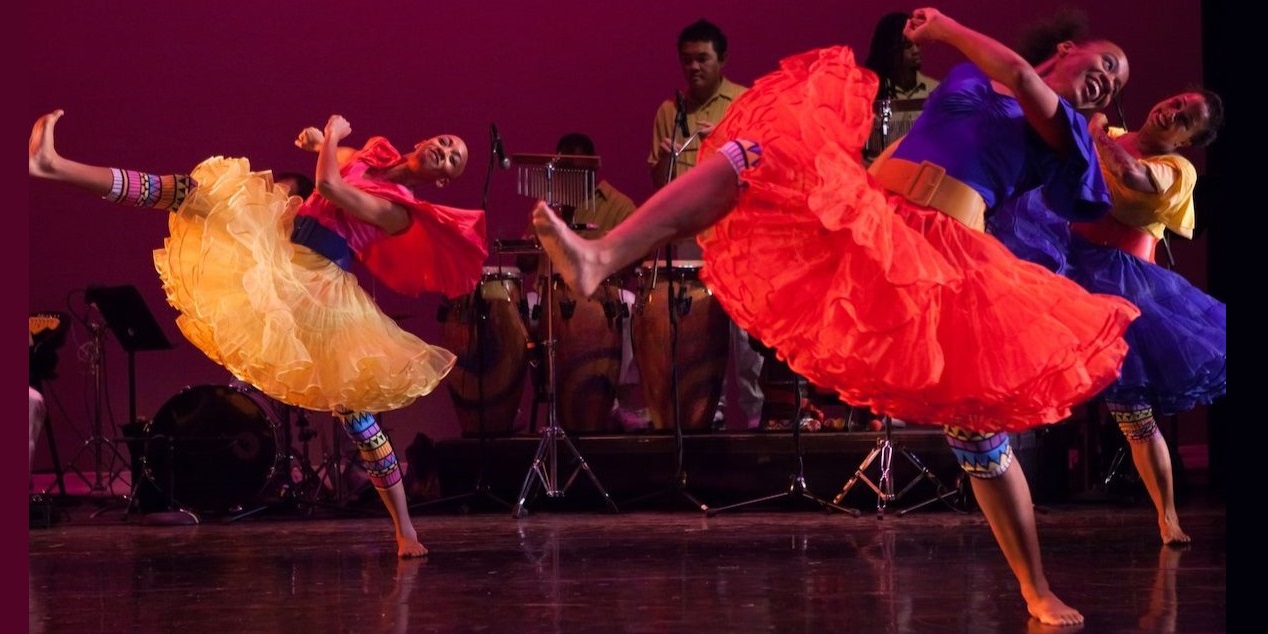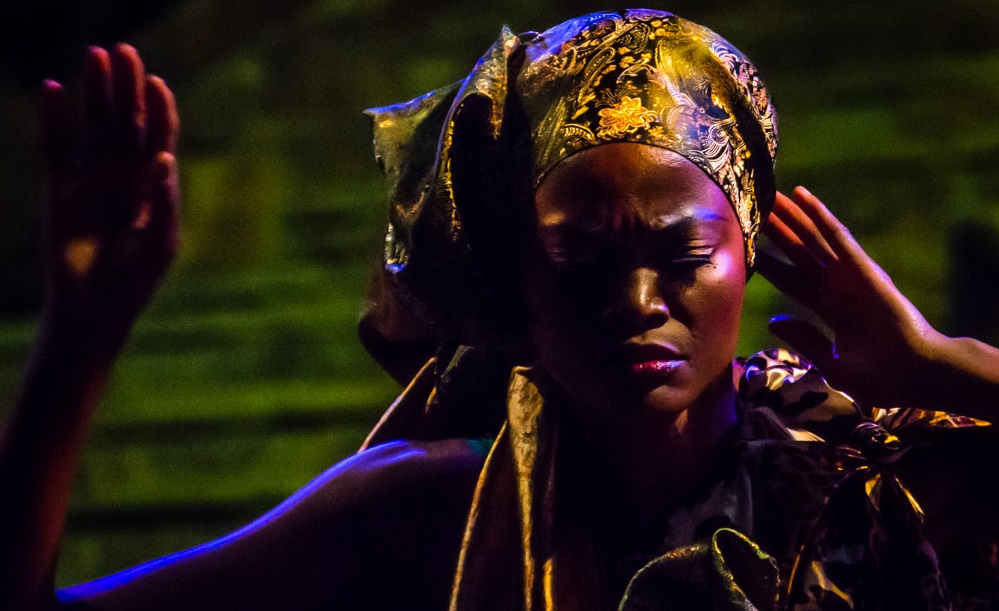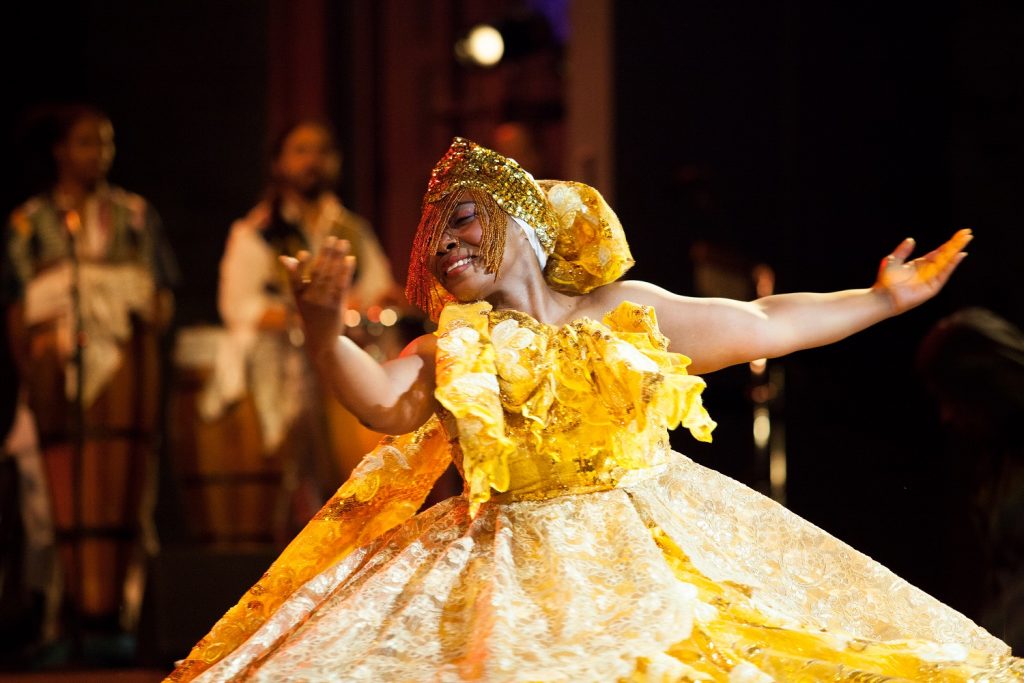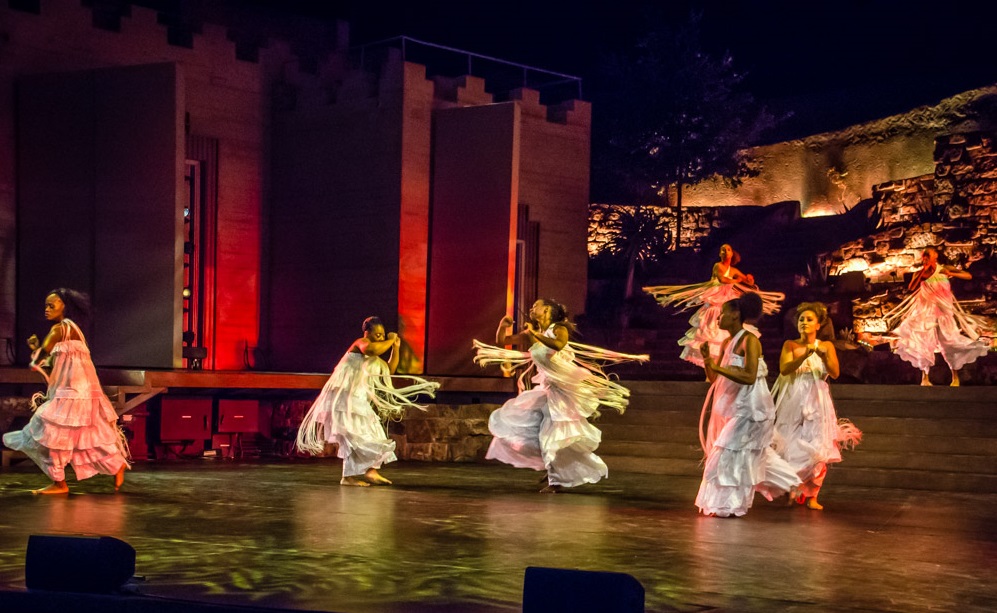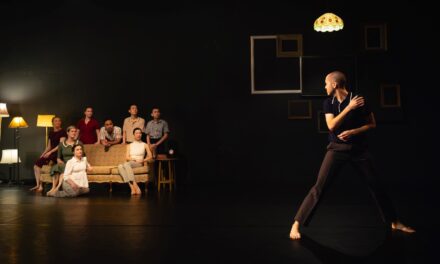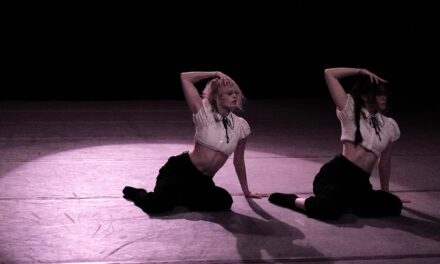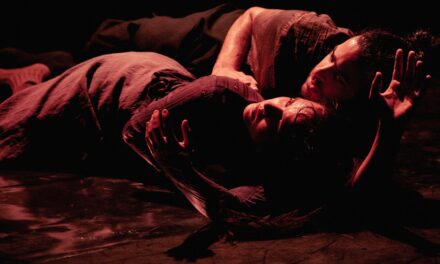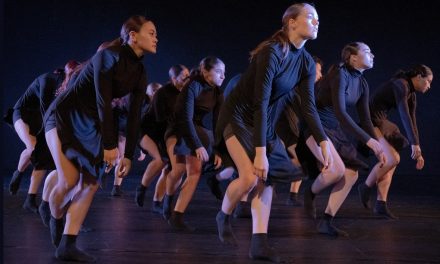On Saturday, October 18th, as part of the Sierra Madre Playhouse’s first full season of dance, I enjoyed a lively performance by Viver Brasil. “Rezas e Folhas” is the third iteration of a work in progress being shared in preparation for a full show in 2026, followed by a tour. Viver Brasil brings Afro-Brazilian influenced dance, music, and rituals to the stage, and I especially enjoyed the dynamic live music that included drums, guitar, and singing.
The performance began with an interactive section, in which choreographer Vera Passos called on the audience to stand, sing, and learn some basic dance steps. She had a warm presence, and I enjoyed the way she explained the meaning of some of the gestures as she taught them. In the small theater at the Sierra Madre Playhouse, this functioned well but could require exploration and development in larger spaces.
As Passos first walked down the aisle, she selected six audience members who were brought up to the stage and sat there for the entirety of the performance. At times during the performance, the female dancers interacted with them physically, and on the small stage, many of the dancers’ high energy kicks swept barely above their heads. Perhaps these participants were pre-selected, but it did seem like there was a missing moment for consent. Something like a ticketing note when purchasing aisle seats could be a way to do this to make sure audience members are comfortable with touch and with being separated from their groups on stage for the entirety of the performance.
In addition to four musicians, the cast was made up of five talented dancers, Laroye Aña, Ysaÿe Alma, Ashley Blanchard, Tulani Simone, and Malia Henderson. They were dressed simply in white spandex shorts and ruched white layered tanks. The simplicity of the attire highlighted their powerful dancing, though at times it felt too pared down in contrast with the overall energy of the performance and highlighted some issues with synchronization. As the dancing has indigenous Afro-Brazilian influences, I imagine that things like community, connection, and meaning may be more important than visual cleanliness. However, the more contemporary and stripped down costumes invited the eye to notice the differences in lines, timing, and initiation in some sections.
The movement vocabulary consisted of grounded footwork, flexed kicks, slicing arms, and rhythmic undulations. Some of the sections seemed to reenact rituals or traditions. In one section, the dancers spun with their arms up in separated spotlights. It felt meditative and introspective and made me think of the Whirling Dervishes, Sufi Muslims who spin for hours as part of a prayer ritual. Not only did it seem meditative for the dancers, but it was hypnotizing to watch.
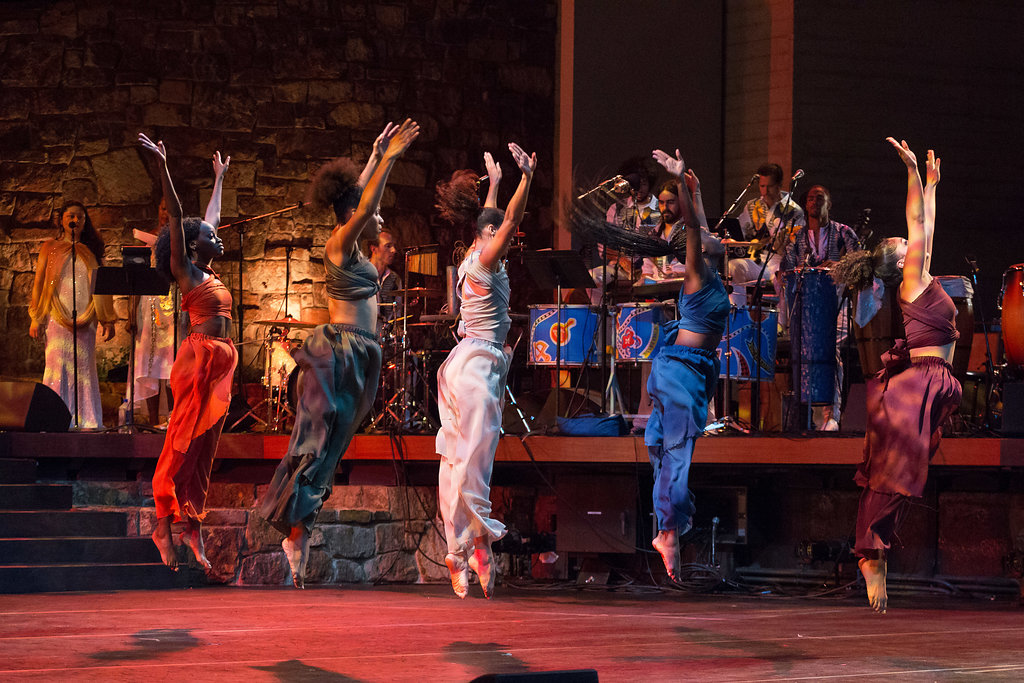
Viver Brasil in Cor da Pele with Dancers L to R Nagode Simpson, Ajah Muhammad, Rachel Hernandez, Ashley Blanchard, Bianca Medina – Photo by Gia Trovela
In another section, dancers slowly paced on and offstage carrying baskets and white blankets on their heads. The blankets draped down covering the faces of the dancers. One dancer stopped and laid out her blanket on the floor, but when the next attempted to follow her actions, she began to quiver and shake as if she was overtaken by some unseen force. In the introduction to the evening by co-artistic director Linda Yudin, we were told that part of the theme of the evening was blending past and future, rituals and next steps. To me, this section showed the struggle to keep up with rituals in the complex world of today, as the dancer seemed to be pulled in too many directions to complete her task. However, the solution to her plight came back to traditions and rituals, as her community helped her heal and rise up with strength by showering her with popcorn, which Passos had told us earlier had regenerative and healing power in the Afro-Brazilian culture. While the modern world is complex, the way to move forward is sometimes simple and time-honored.
In the next section, three dancers moved powerfully and dynamically as popcorn flew while they spun and reached. Here, the dancers seemed to do the same movement but not together, as they individually gathered strength, before coming together for a powerful unison rendition of the same phrase.
The last section showed the most contemporary dance influence while still maintaining the Afro-Brazilian roots. Each of the five dancers had a solo, showing off moments of flexibility, undulating spines, quick gestures, and movements in and out of the floor. They each showed immense control and expressed individuality, while maintaining the feel of community through their shared movement vocabulary. As all five dancers moved together, the spacing on stage felt tight, especially with the six seated audience members still onstage. There were so many precise details to the movement that would have been even more clear and powerful with a bit more togetherness. At the peak of this finale, the dancers, who had expressed their control as they moved silently, moved more ecstatically with vocalizations, breaths, and percussive sounds. It made for a powerful moment before the music came back again and brought the evening to a strong finish.
The overall performance was enjoyable and well-paced, with the show moving along at a good pace through the various sections. As the company prepares for a full performance and tour, I encourage them to think about consent with the audience participation as well as how moments will work in different spaces. The audience participation might be more challenging in a larger venue, while some of the dancing on stage seemed to need more space. I commend Viver Brasil for bringing indigenous Afro-Brazilian to life on stage in a way that felt current, and I look forward to seeing how this work will grow.
For more information about Viver Brasil, please visit their website.
To learn more about the Sierra Madre Playhouse, please visit their website.
Written by Rachel Turner for LA Dance Chronicle.
Featured image: Viver Brasil – Photo courtesy of the company.

